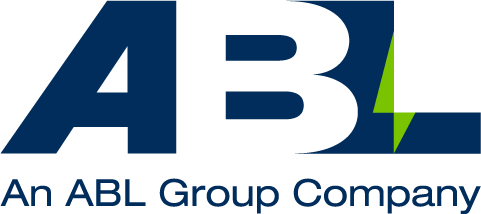Tackling Asset Integrity Challenges: Insights from ABL’s Work Across Africa
Emeka Onuh, ABL’s Asset Integrity Management (AIM) Regional Manager for Africa, attended the Wider Africa Energy Summit (WAES) in Aberdeen. The event is a key forum where operators and service providers exchange insights on technologies that enhance oil recovery and strengthen asset infrastructure management.
With decades of experience supporting oil and gas clients across Africa, including Nigeria, Angola, Cameroon, Gabon, and Egypt, Emeka has seen first-hand the recurring challenges operators face in maintaining asset integrity.
In this blog, Emeka shares these common challenges and outlines practical strategies that ABL’s AIM team has implemented to help clients overcome them, turning complex issues into opportunities for safer, more efficient operations.

Common challenges
1. Lack of base/foundation data quality
While delivering a criticality assessment and maintenance optimisation project for a client in Nigeria, I noticed one of their challenges was lack of accurate, complete, and structured base/foundation data. There were a lot of critical (safety, production, environmental) equipment missing from the equipment register. Equally many of the equipment in the register had poorly or non-populated details including descriptions, categories, statuses, discipline, manufacturer details, etc.
Effective asset integrity management relies heavily on consistent and high-quality data to make informed decisions about the health and maintenance of the physical assets.
Poor foundation data can result from:
- A lack of data governance or standardisation
- Legacy assets with undocumented history
- Siloed systems
- Paper-based records.
2. Inadequate equipment criticality assessment
On reviewing the documentations for an asset register completeness check and optimisation project that I was delivering for our client in Gabon, it became evident that they had issues with equipment criticality assessment. They did not have a clear process for evaluating and ranking equipment based on how critical the equipment was to safety, production and environment.
Inadequate equipment criticality assessment can lead to significant issues in asset integrity management and operational reliability.
This can result from:
- Incomplete or outdated data
- Using subjective or inconsistent criteria in the assessment
- Lack of expert and/or stakeholder input
- Inability to consider failure modes and consequences
- Lack of alignment with actual risk or business impacts
3. Incomplete maintenance and inspection coverage
A challenge that one of our clients in Cameroon had was incomplete maintenance and inspection coverage of their maintainable equipment. I was delivering a safety critical equipment implementation and performance standards alignment and on analysing the maintenance data, we found out that a lot of their maintainable equipment are not being maintained, including safety critical equipment.
Incomplete maintenance and inspection coverage can sometimes result from:
- Inadequate or incomplete foundation data
- Lack of resources
- Inadequate maintenance management system
- Poorly defined maintenance schedules
- Lack of competencies
This can have consequences including health and safety, risk of equipment failure and reliability issues, reduced efficiency and increased safety hazards, failure to meet industry and/or regulatory standards, as well as the risk of allowing small issues to grow into costly repairs and operational downtime.
4. Lack of key performance indicator definition and measurement

Another challenge I identified while delivering safety critical equipment implementation and performance standards alignment for our client in Cameron was lack of key performance indicator definitions and measurements.
This is a common issue that most organisations face which can greatly hinder performance tracking, decision making and alignment of goals.
This issue is apparent in organisations where objectives are vague, where there are minimal strategic planning and a lack of clear communication between leadership and departments.
This issue can result where:
- There is no framework for setting measurable goals
- Maintenance and inspection metrics are not aligned with business goals
- KPIs are too broad, irrelevant, not actionable
- Data is not collected or analysed consistently
- There is no reporting tool in place
This can lead to low employee motivation and unclear expectations, difficulties in identifying issues and opportunities, lack of or poor visibility into performance, and wasted resources due to inefficiencies.
5. Poor spare parts, inventory and materials management
A challenge that was evident while I was delivering a Computerised Maintenance Management System (CMMS) optimisation project for one of our clients in Nigeria was poor spare parts, inventory and materials management. This is a major challenge and can cause serious operational, financial problems including:
- Frequent stockouts or overstocking of parts
- Excessive carrying costs
- Obsolete inventory
- Long equipment downtimes
- Manual tracking with inconsistent or inaccurate records
- Poor demand forecasting and procurement planning
These problems stem from a lack of centralised inventory systems, inadequate inventory policies, and siloed operations between maintenance, procurement and stores. They can also be a result of inadequate audits and control, poor forecasting and procurement planning, limited or lack of staff training, and lack of or inadequate spares and repairs strategy.
6. Lack of continuous improvement strategy
Lack of continuous improvement was a challenge I encountered while delivering a maintenance integrity management project one of our clients in Egypt. The client didn’t have in place a clear strategy for sustaining our deliverables and ensuring that maintenance integrity management remains at optimum level.
Without continuous improvement strategy, organisations lack the ability to sustain improvements, innovate or achieve operational excellence. Such organisations tend to operate reactively rather than proactively towards problem-solving. Lack of continuous improvement strategy can result in:
- Missed opportunities to optimise operations, processes and procedures
- Failure to learn lessons
- Lack of employee engagements in required improvements
This becomes evident when there is no regular review of processes or performance metrics, when improvements only happen after major failures or incidents, and when there is a lack of feedback mechanism.
The challenges above can result in:
- Equipment failures
- Unplanned downtime
- Poor operational efficiencies
- Inadequate asset lifecycle management
- Environmental risks including regulatory consequences
- Reputational damage
- Safety hazards
- Poor planning leading to reactive rather than proactive maintenance.
- Missed production targets
- Ineffective capital planning
- Financial losses
Solutions for optimising asset integrity management
Achieving an optimised asset integrity management approach can be complex, but it’s not impossible. Here are some proven strategies:
Build a Complete and Accurate Equipment Register
Start with a solid foundation: a comprehensive equipment list. This often requires both desktop reviews and on-site verification to ensure nothing is missed. A complete register is essential for planning maintenance and managing risk effectively.
Apply Equipment Criticality Analysis
Not all assets carry the same level of risk. A well-defined criticality analysis process aligned with industry best practices helps prioritise resources where they matter most. This ensures high-risk equipment gets the attention it needs.
Develop Risk-Based Maintenance and Inspection Strategies
Maintenance should be proactive, not reactive. Techniques like RCM (Reliability-Centered Maintenance), FMECA (Failure Modes, Effects and Criticality Analysis), and RBI (Risk-Based Inspection) allow you to design strategies that reduce downtime and prevent failures before they occur.
Strengthen Process Safety Management
Safety isn’t just compliance, it’s operational resilience. Conducting process safety studies helps identify potential hazards and implement controls that protect people, assets, and the environment.
Optimise Spare Parts Management
Unplanned downtime often comes down to missing parts. Bills of Material (BoM) optimisation ensures accurate ordering details, correct min/max stock levels, and a well-organised warehouse so you have the right parts at the right time.
Drive Continuous Improvement Through Training and Competence Development
Asset integrity isn’t a one-time project, it’s an ongoing process. Workforce training on maintenance execution, competence frameworks, and improvement roadmaps help embed best practices and foster a culture of continuous improvement.
Ensuring the long-term performance of your assets starts with the right expertise. Get in touch with the ABL Asset Integrity Management team to explore practical strategies for improving reliability, safety, and efficiency across your operations:
